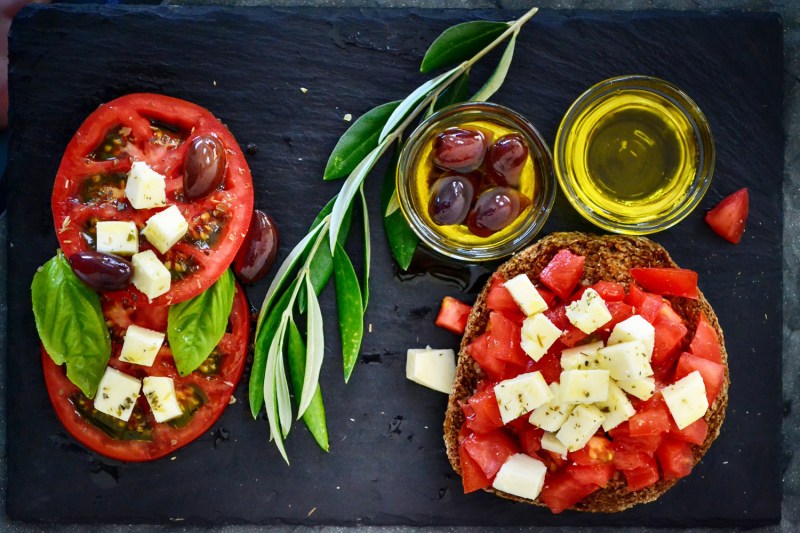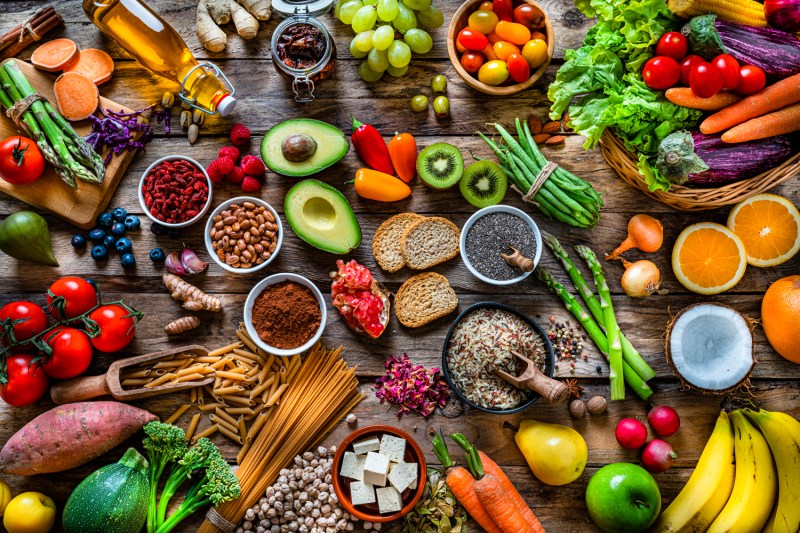As you pursue your health goals, you’ll want to find the best diet to support these strides. The ideal diet for you can depend on whether you wish to lose weight, build muscle, or simply become healthier and how it fits into your lifestyle needs.
If you’re considering the Mediterranean diet vs. Paleo, keep reading for help to decide which diet will enhance your health regimen and the potential health benefits gained from each diet plan.
What is the Mediterranean diet?

The Mediterranean diet adopts the dietary habits of the Mediterranean region, including countries like Italy and Greece. This diet has been deemed beneficial because of the low chronic disease rates and greater longevity experienced by Mediterranean inhabitants.
Following the Mediterranean diet allows you to enjoy fresh and healthy foods at every meal. These components include fruits and vegetables, lean proteins, whole grains, and healthy fats like omega-3s. This health-boosting way of eating offers a treasure trove of foods packed with antioxidants, vitamins, and minerals, promoting a clean bill of health.
What is the Paleo diet?

The Paleo diet takes us back to the eating habits of hunter-gatherers of the Paleolithic times. The dietary patterns of the earliest men and women are said to promote physical fitness and ward off chronic diseases like cardiovascular troubles. The results of expansive research on this subject suggest that hunter-gatherers had better physical health and experienced significantly fewer degenerative events and diseases like osteoporosis and anemia because they didn’t have processed foods to partake in.
The Paleo diet consists of rich sources of nutrients and a heavy focus on protein. In the generations before, wild animals provided protein, and plant sources like wild berries and various vegetables supplied the necessary vitamins and minerals. Adherence to the Paleo diet entails eating meats like turkey and beef, as well as fruits and veggies like blackberries, squash, and avocados. You can add in more flavors with sweet potatoes, nuts, and seeds, as well as turmeric and rosemary.
What are the benefits of each diet?

The Mediterranean diet has many advantages. One of the major hallmarks is its heart-healthy nature. Regular consumption of chickpeas, melons, and fish, which comprise the diet, benefits blood pressure levels and cholesterol. The high fiber content can also support blood sugar and encourage satiety, thus promoting weight loss. It’s also important to note that cutting out processed junk foods from the diet and increasing whole grains and plant-based foods can improve mood, brain function, and memory.
Similarly, there are advantages of the Paleo diet. Eating fresh fruits and vegetables has been beneficial for lowering the risk of cardiovascular disease, obesity, and type 2 diabetes. Eliminating processed foods and sugars has helped alleviate complications related to blood pressure and other biomarkers like cholesterol, glucose levels, and body fat management.
Are there any downsides to the Mediterranean or Paleo diet?

Potential drawbacks to the Mediterranean diet are related to the risk of inadequate nutrient groups. Due to the reduced consumption of dairy, there is a possibility of not receiving enough calcium. You may find that you aren’t getting enough iron when eating leaner meats and protein sources as well. Additionally, excessive amounts of healthy fats like nuts and olive oil can lead to additional weight gain, which is counterproductive if you’re striving to keep your weight stable.
Some disadvantages of the Paleo diet are related to excluding certain foods from this diet. Grains and dairy products aren’t included in the Paleo diet, but these components can benefit health and help maintain energy. Although it is a plant-based pattern, restricting legumes and beans may make this diet challenging for vegetarians. Not only is the lack of nutrient insufficiencies a drawback, but this diet may also be more expensive, making it difficult to sustain.
Which diet is more restrictive?

Overall, the Paleo diet is the more restrictive diet. Following Paleo diet guidelines, you must omit dairy products, legumes, and grains. Be advised that in most variations of this diet, these foods are to be eliminated, even if they aren’t processed. Conversely, legumes and grains are a part of the Mediterranean diet.
Is the Mediterranean diet or Paleo diet better for you?

The Mediterranean and Paleo diets have many advantages and disadvantages, but the Mediterranean diet may be the best choice for a healthy diet plan. Compared to the Paleo diet, the Mediterranean diet may be easier to stick with based on palatability and a more comprehensive option of permitted foods.
For those looking to build a foundation for a new diet, the wider variety may seem less intimidating, making your health goals more attainable. Additionally, there is more substantial evidence in favor of the health benefits provided by the Mediterranean diet, and the nutrient profile is plentiful.
Frequently asked questions

Is the Mediterranean or Paleo diet better for weight loss?
The Paleo diet may be the better plan to promote weight loss; however, this is likely in the short term. Some research studies have shown that six months of following the Paleo diet can produce weight loss and decreased waist circumference. Other beneficial results include fat reduction, glucose sensitivity improvements, and favorable lipid profiles, which ultimately benefit body weight and metabolic parameters related to type 2 diabetes and cardiovascular health. However, the sustainability of this diet calls into question the sustainability of weight loss, and the Mediterranean diet may be more helpful for longer-term results.
How are the Mediterranean diet and Paleo diet similar?
Both diets encourage the consumption of fresh produce and nuts. Additionally, processed foods and added sugars are discouraged. Meats like turkey, chicken breast, and salmon are also permitted options. Eating kale and squash, or bananas and melons, with turkey for lunch or chicken breast for dinner, would be feasible for either diet plan.
What are the differences between the Mediterranean and Paleo diets?
Some differences between the Mediterranean and Paleo diets may determine which you choose to adopt. Paleo is more restrictive and calls for eliminating dairy products, legumes, and grains, which are featured in the Mediterranean diet. Additionally, the Mediterranean diet encourages more moderate meat consumption, while Paleo emphasizes natural, grass-fed meats.
Notice the types of meat permitted — the Paleo diet allows red meats like beef and pork, while the Mediterranean diet focuses more on leaner meats and consumes them in moderation. Another difference is the cooking oils, as the Mediterranean diet calls for olive oil instead of saturated fats, like butter and coconut oil, which are allowed in the Paleo diet.




